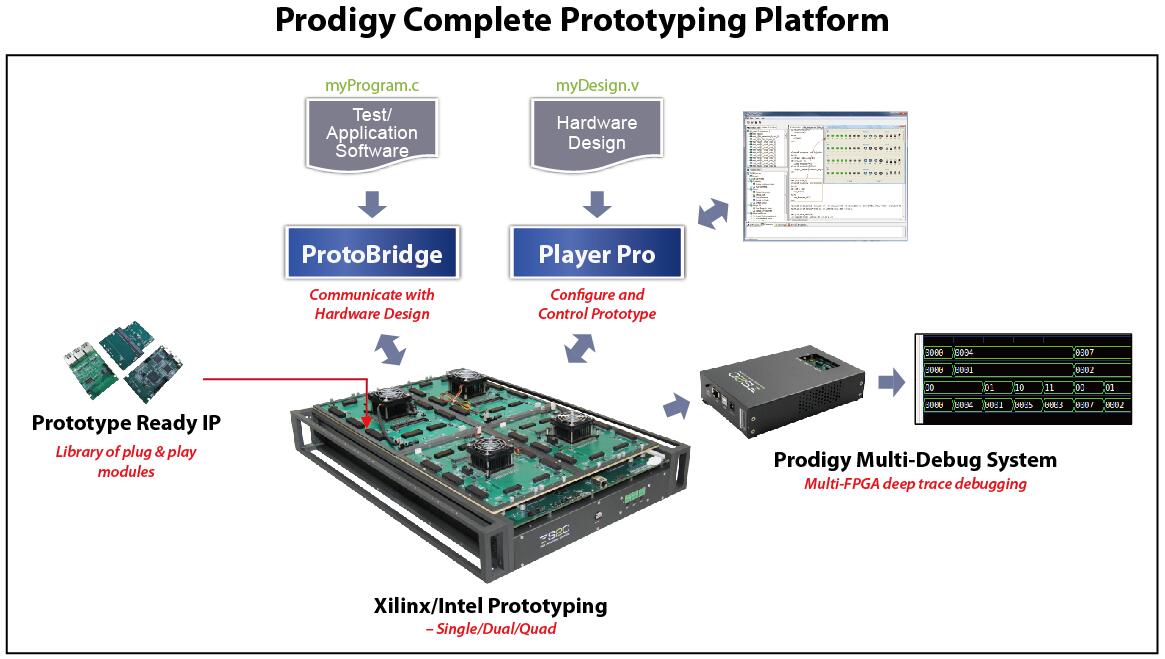I recently wrote about The Implications of the Rise of AI/ML in the Cloud. In that article, I wrote about my expectation that the rapidly growing AI market will lead to the accelerated use of high-level synthesis (HLS), prototyping, and emulation. In this article, I will focus on the prototyping portion of that – specifically FPGA prototyping.
As has been noted often recently, the number of Artificial Intelligence (AI) development teams is exploding. While some are in big companies, there are a lot of start-ups as well. But AI differs from many other areas because, it is such a new domain, the things that need to get implemented, such as algorithms, architectures, software, dev ops considerations, etc. are all changing multiple times during the design cycle. How can design teams deal with this, especially the smaller companies with fewer resources?

Emulation boxes are fast, and for an even larger outlay, they can handle design capacities exceeding 2 billion gates. Many start-ups cannot afford those expensive solutions and don’t need quite that capacity. FPGA prototyping offers solid support for several critical functions at a fraction of the cost of emulation hardware. For a small-to-medium sized company, it is a good idea to find a tool for a reasonable price that can handle multiple tasks – more tasks than would typically be handled with an emulation tool. When I looked at S2C’s offering their Prodigy prototyping solutions can be used for design exploration, IP development, hardware verification, system validation, software development, and capability testing. In short, you can use it throughout the hardware design cycle. You can use the same tool in exploring architectural options that you use to validate the functionality of the design. You can also use the same system to develop and the test the software that will run on these devices without having to wait for the final silicon to come back from the factory.
The Prodigy product family also includes ProtoBridge. This product enables the high-speed communications necessary to have a prototyping environment with a transactor interface between software and AXI-compliant hardware. While the system was initially developed with ARM-based systems in mind, it would seem they could easily be used (and probably have already been used) to develop RISC-V systems sporting AXI compliance (such as the SiFive S51). I think this could be very important given the large number of AI teams intending to use RISC-V ISA cores.
My previous article highlighted some AI/ML solutions in the cloud from larger providers in that area – Google, Microsoft, IBM, etc. This is because it is easier to find public information on these offerings since they are available now. But the large and diverse developments at smaller companies is indeed staggering. There are more than 60 startups in the AI market, many of which have already raised $50M or more. While $50M is a lot of money, it doesn’t go very far today if you are designing a chip at one of the newer process nodes. What I am hearing is that developing the AI algorithm in parallel with the chip is quite difficult. These AI algorithms are always under development and yet getting a working prototype before tape-out is critical. Showing a working prototype may also be a critical part of getting the next round of funding. On top of that, just the costs of a new mask set (to fix design flaws that should have been detected earlier) set can kill the company’s dreams. But the creative multifaceted use of FPGA prototyping from a company like S2C can do wonders to stretching that budget.
S2C’s technology is proven. It is trusted by dozens of companies you have heard of, names like Intel, Samsung, Qualcomm, Cypress Semiconductor and LG. AI companies should really give this consideration. S2C pricing starts at under $10,000 for about 10M equivalent logic gates and scales up to much higher capacities. To get a quick S2C quote click here.
Share this post via:





Comments
There are no comments yet.
You must register or log in to view/post comments.